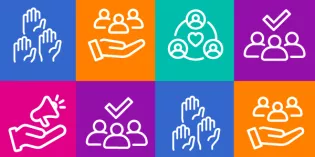
It was 9pm. My laptop was open and I was eating a bowl of pasta that was precariously perched on the corner of the table. Exhausted, I needed to finish preparing a presentation for an extra teaching session I had agreed to. In the back of my mind, my ARCP was looming, and I knew my portfolio didn’t have enough entries yet… that would have to wait though. The following morning, I arrived at work to find that my colleague was unwell leaving nobody to cover the long day shift. The consultant looked pleadingly around the room. Some people explained that they couldn’t, others stared at their feet… Silence. I sighed. “I’ll do it,” I said. Again.
Without realising it, I was taking on more and more tasks, sacrificing my downtime and without the headspace to recover and reset, I was on a road towards burnout. But it was hard to say no. I like to please people, help them out, and let’s be honest, my colleagues appreciated it. There was also something about not passing up on opportunities to learn and develop, but, more concerningly, this sense that somehow my dedication and commitment depended on taking on all these extra things.
So how do we begin to set boundaries for ourselves? How do we give ourselves permission to say no? Tessa Davis from Don’t Forget the Bubbles offers some fantastic tips on this. A three-minute video that is well worth a watch (link below).
A couple of months ago, I was asked to be involved in a project that sounded exciting. Though not directly through work, it was related to child health and relevant to my interests. I wrote an email saying yes, I would love to get involved. Then I paused… What was I doing? I was already involved in various projects and was juggling things in my personal life. I pressed the backspace key and started again.
“Though it sounds like a great opportunity, I’m already involved in a number of projects and for my own wellbeing, I can’t take on any more.” It felt somehow empowering to take control of my own time.
I’m slowly learning that it’s OK to put personal boundaries in place and that I don’t need to apologise profusely for doing it. By saying no, I am role modelling to others that it’s OK to put your own needs first sometimes. That your health, family, hobbies and other priorities are important too.
So when that next request comes in, allow yourself time to pause for a second before you jump in and say yes. There is also an option to say no.
We, the Thrive Paediatrics team, would love to hear your stories of times you’ve felt empowered to set boundaries for yourself. What has helped you achieve this and are there any tips or learning points you could share with your colleagues? Email us at thrive@rcpch.ac.uk (No information will be shared publicly without prior discussion)










